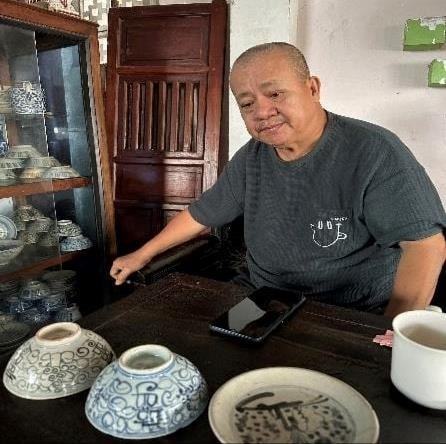
1. Recently, by chance I had the opportunity to meet and talk with Mr. Lam Du Xenh - a famous collector and conservator of antiques not only in Quang Nam , but also at home and abroad.
Books and newspapers about Lam Du Xenh gave him many beautiful names, from the number 1 antique collector to the person who keeps and preserves thousand-year-old antiques... His garden in Chau O town, Binh Son district ( Quang Ngai province) became a private museum with 4 rows of houses containing thousands, even tens of thousands of antiques of all sizes and shapes.
Small artifacts include agate, gold jewelry from the Sa Huynh culture, and ancient coins. Large artifacts include ironwood anchors weighing several hundred kilograms, or even the remains of sunken ships several hundred years old.
There are all kinds of antiques, from cups, jars from the Tang and Ming dynasties to bronze weapons from the Dong Son period, animal statues, fertility statues of linga, yoni and gods of the Champa culture. Just looking at them and walking around them is enough to make you dizzy.
After visiting, he and I went to a small tea shop. This tea shop was also decorated in an old style, with a few small glass cabinets displaying old dishes.
Looking into a cupboard, I saw a batch of white dishes with blue borders or close to smoky blue, with patterns of trees and geometric lines. I told him that in 1975, my family had returned from Da Nang to Quang Tri with batches of dishes of the same design. But the adults usually kept them carefully, only taking them out to use on death anniversaries or Tet holidays.
Just a few minutes ago, I also saw the entrance to Mr. Lam Du Xenh's garden, on the gate post built in the old style, there were also plates and bowls like that attached.
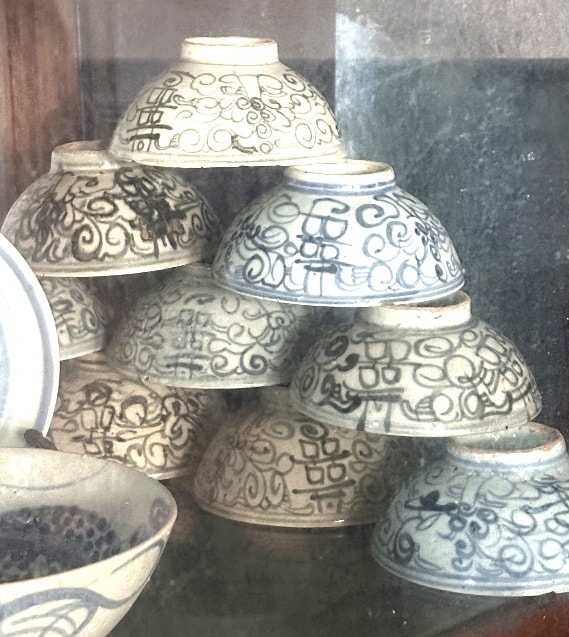
Listening to me, Mr. Lam Du Xenh attentively asked me if I knew the origin of these dishes. I replied: "I heard before that these products originated from China, later some places imitated them like in Lai Thieu, Binh Duong province".
Hearing that, Lam Du Xenh nodded: “That is both true and false. It originated in China but was later made in our country. In the Central Coast, most of these ceramics are produced in kilns at the foot of Deo Le Pass, Que Son District.”
Le Pass, I was startled when I heard it. Provincial Road 611 crosses this pass many times. I have many friends in Que Son, Nong Son but have never heard of ceramic production there.
2. Sipping ginger tea on a winter afternoon at the end of the year, Mr. Lam Du Xenh recounted the story of finding these pottery kilns and found the encounter to be very interesting.
The reason started a couple of years ago, when he invited a carver from Quang Nam to restore an ancient house that he had just found. During his free time, the carver told Lam Du Xenh about a story he had heard from his elders.
Once upon a time, at the foot of Le Pass, his hometown, there was a pottery kiln that specialized in making all kinds of dishes that Lam Du Xenh used to decorate the gate pillars. Hearing the interesting story, Lam Du Xenh searched for it in Quang Nam and discovered that it was a true story.
He carefully opened the glass cabinet, took out a few dishes, and continued his story. The first trip he took by himself, at Le Pass, he turned toward An Trach Dam for a few kilometers, and after digging through the forest, he found pieces of ceramic. He was glad to have discovered the traces.
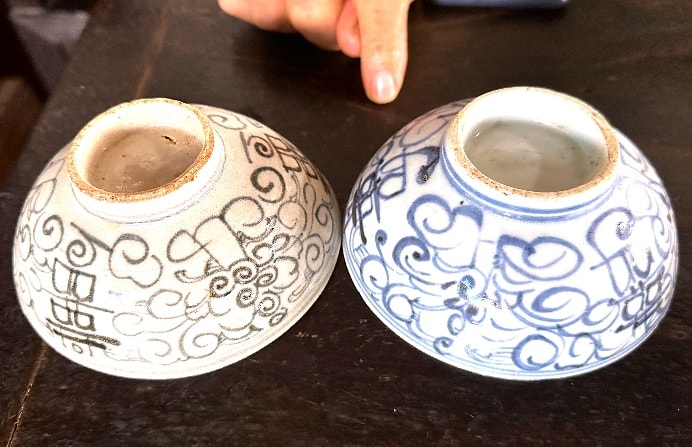
But what was even more gratifying was that this information was known to two famous researchers. They were Associate Professor, Dr. Bui Minh Tri - Director of the Imperial Citadel Archaeology Institute and Dr. Nguyen Van Viet - Director of the Southeast Asian Prehistory Center. Both of them contacted Mr. Lam Du Xenh. They quietly made more field trips.
The results showed that there were definitely pottery kilns here, specializing in making household items such as blue patterned dishes. Mr. Lam Du Xenh said: “On my first trip, I also saw the shape of the pottery kiln lying along the hillside, at a height of a few dozen meters, and also a few dozen meters across. It is unique in that brick kilns in many localities are horizontal kilns, but here the kiln is tilted, tilted several dozen degrees along the hillside.”
He further explained that the pottery kilns here are very convenient because the land is rich in kaolin, there are forests and mountains to provide fuel, and there is water to make pottery bones. In addition, in the past, when transportation was difficult, there was the Thu Bon River, and all kinds of household pottery followed this river to the ancient town of Hoi An, from there spreading to other localities in the central coast.
Lam Du Xenh said he had researched and learned that the first owners of the pottery kilns here were Chinese immigrants, so the locals called them Khach Tru. After a few generations, they were completely Vietnamized and people gradually forgot the name of this dishware item, Khach Tru dishware.
3. Holding each type of dish in his hand, Mr. Lam Du Xenh said, this household item has a very rustic beauty. People name it based on the pattern on the dish. There is a dish with a confusing drawing because the body has geometric patterns that interlock with each other.
There are bowls called banana trees because they are shaped like banana trees, and Buddha's hand bowls because they are shaped like Buddha's hand fruit. In the past, almost every family had this type of bowl and plate to use during Tet and death anniversaries. Food displayed on these bowls and plates looked very eye-catching and lively.
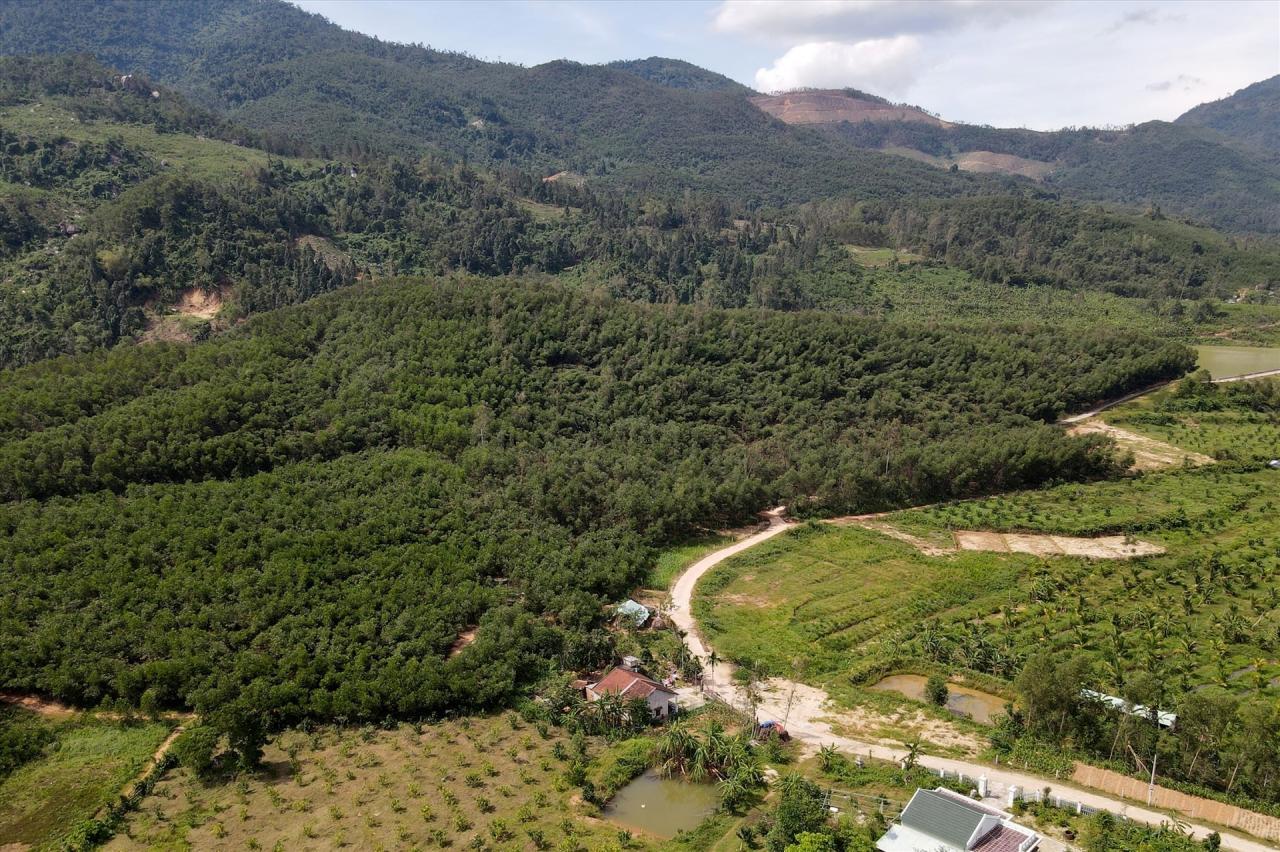
I suddenly asked him, if there was such interesting information, why didn’t he publish it or provide it to relevant sectors for joint research? Mr. Lam Du Xenh said: “Mr. Tri and Mr. Viet took a lot of notes, took a lot of photos and had planned to organize a scientific conference. But right at that time, the COVID-19 pandemic hit and had to postpone it. Recently, I also contacted and asked, and they said they would organize it at a suitable time.”
So was there ever an ancient pottery kiln specializing in producing Khach Tru dishes that existed at the foot of Le Pass? After hundreds of years, the traces of the kilns are still there and remain in the memories of the elders.
Holding the dishes that could be considered antique, thinking of the ceramic items I still see people displaying during holidays, my heart was a little moved.
Perhaps, at the foot of Le Pass, a famous place in Quang Nam province, there are still mysteries that have not been discovered. Such as the pottery kilns and household ceramics that Mr. Lam Du Xenh accidentally discovered. When did they come into existence, who were the names of the owners of the kilns at that time, and how long did the period of production and prosperity last, until when and why did they decline?
So many unanswered questions. Suddenly I wish that this field information would attract the attention of the cultural sector and the locality. And the relevant parties would consider coordinating research and restoration of these kilns? Maybe this information would help this place become an attractive tourist destination in the western region of Quang Nam.
Not to mention, household ceramic products are on the rise again, people have the right to dream that these types of dishes will be chosen by consumers. Because in addition to their functionality, these items also carry the ancient image of our ancestors, in a period of history that has been covered in mist...
Source: https://baoquangnam.vn/bi-an-duoi-chan-deo-le-3146754.html




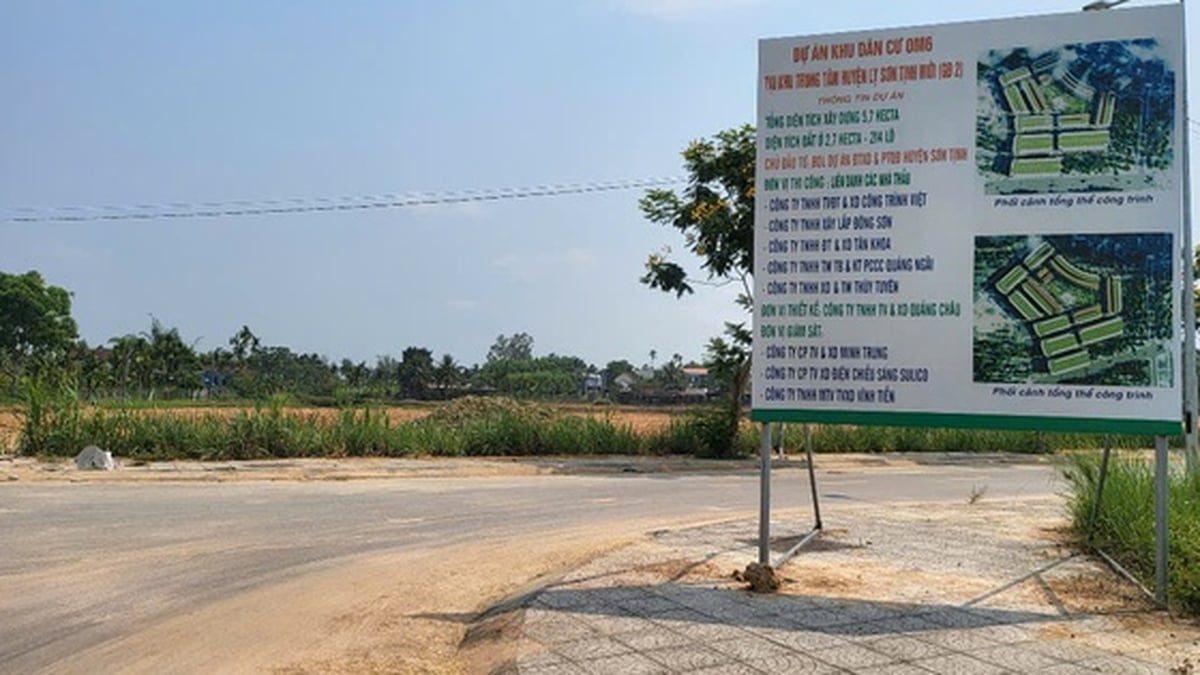


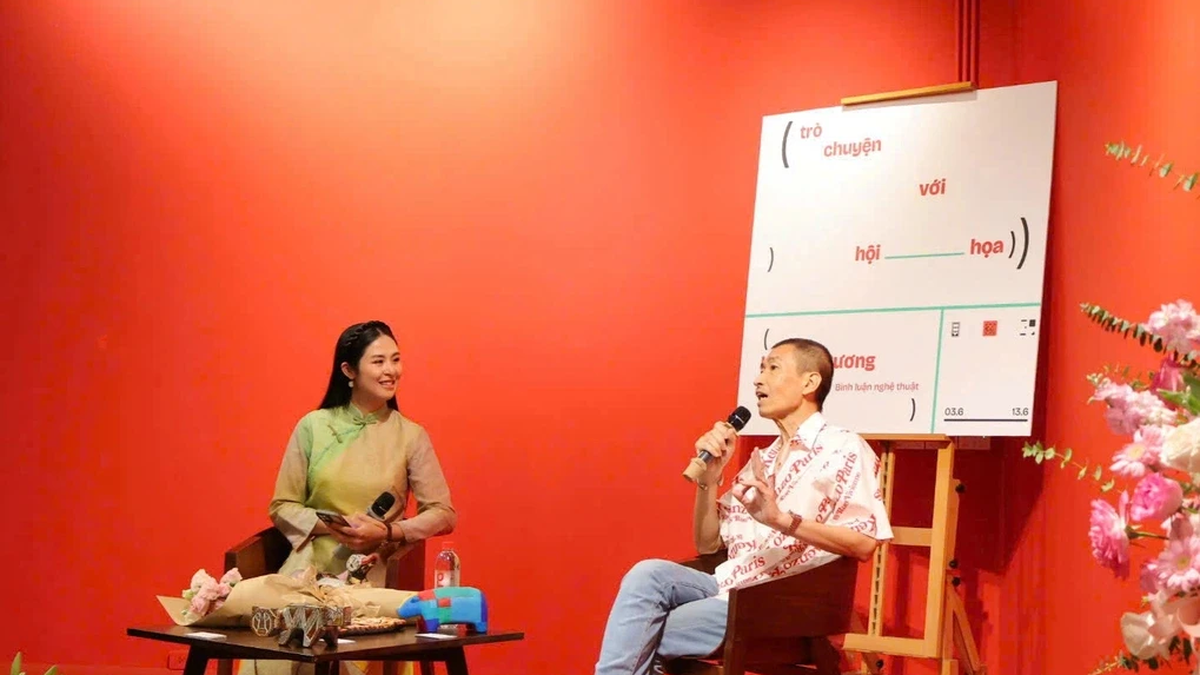



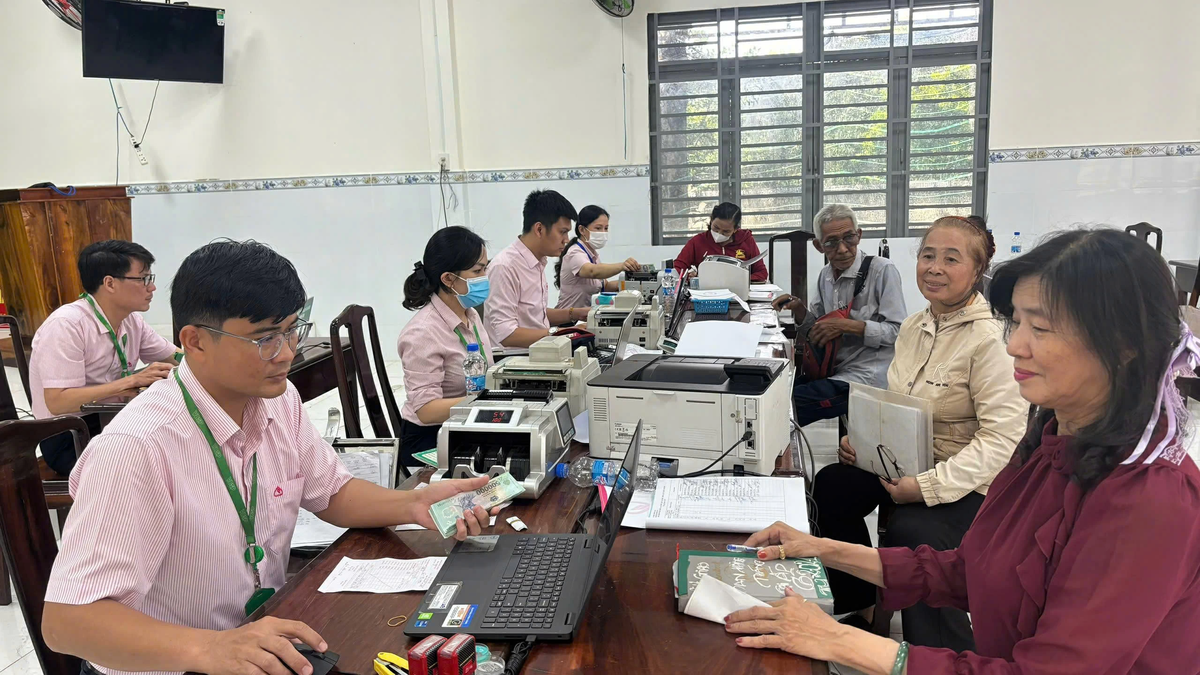

















































































![[Infographic] In 2025, 47 products will achieve national OCOP](https://vphoto.vietnam.vn/thumb/402x226/vietnam/resource/IMAGE/2025/7/16/5d672398b0744db3ab920e05db8e5b7d)





Comment (0)